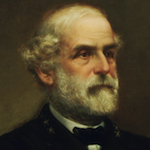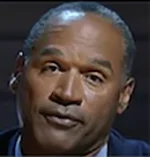 |
| Robert E. Lee |
Donald Trump had nothing but praise for Confederate General Robert E. Lee after watching televised images of a crane removing the statue of that slave-owning American traitor from its base in Richmond.
He hailed Lee as a military genius who would have led the South to victory, except for Gettysburg.
That’s like saying the New York Mets would have won the World Series, except they didn’t make the playoffs.
Trump is not known for his humor but he has to be kidding. Gettysburg was a disaster for Lee and his army.
It was pure hubris on Lee’s behalf to think his undermanned army could take on the 90K federal troops who were dug in at well-fortified positions at Gettysburg.
Against the advice of trusted advisor General James Longstreet, who wanted to fight on a more favorable ground, Lee ordered waves of frontal assaults on the federals.
On the third day of heavy fighting, Lee ordered General Pickett to charge the center of the Union lines.
It was a suicide mission.
Marching in a mile-long formation, the rebels were shredded by cannon and musket fire from Little Round Top. Half of the 13K men in Pickett’s Charge were killed, wounded or captured.
Upon returning to the Confederate base, Lee ordered Pickett to reorganize his men for another attack.
“General Lee, I have no division now,” Pickett famously said.
Lee lost a third of his 70K troops at Gettysburg, which became known as the High-Water Mark of the Confederacy for the temporary breach of the Union line at Cemetery Ridge.
He wrote a letter of resignation to Confederate president Jefferson Davis, which was rejected.
“If only we had Robert E. Lee to command our troops in Afghanistan, that disaster would have ended in a complete and total victory many years ago,” said Trump.
It’s Lee’s statue and that of the other Confederate traitors (Jeb Stuart, Stonewall Jackson, Matthew Fontaine Maury and Davis) on Richmond’s Monument Ave. that should have been taken down many years ago.
Tallying the economic and mental cost of COVID-19. A Gallup study finds 45 percent of workers have been affected “a lot” by the pandemic.
Fifty-three percent of that group temporarily stopped working, half took pay cuts and 49 percent worked fewer hours due to COVID-19.
Only one in five are “engaged” workers who are enthusiastic about their jobs, while 43 percent are stressed, 25 percent are sad and 24 percent are angry.
Gallup estimated that low employee engagement costs the global economy $8.1T.
“If 80 percent of an organization’s employees are not engaged at work, the organization’s resilience during a crisis will be at high risk and leaders won’t be able to consistently reach their goals. There is no way for leaders to be effective when their people aren’t paying attention to them,” says Gallup’s “State of the Global Workplace: 2021 Report.”


 Republican tough guys Josh Hawley and Tom Cotton want Biden to send the National Guard to Columbia University to put an end to student protests... Bernie blasts Bibi for insulting America's intelligence by equating criticism of Israel's government with antisemitism... German court convicts former financial PR exec who claims he wasn't aware that trading on tips is illegal.
Republican tough guys Josh Hawley and Tom Cotton want Biden to send the National Guard to Columbia University to put an end to student protests... Bernie blasts Bibi for insulting America's intelligence by equating criticism of Israel's government with antisemitism... German court convicts former financial PR exec who claims he wasn't aware that trading on tips is illegal.  Southern governors claim they know what's best for their working class, and it's not pay raises... A Ukrainian human rights group played a key role in convincing House Speaker Mike Johnson to hold a vote to send arms to Ukraine, Israel and Taiwan... Trump Media & Technology Group blames short-selling and not lousy outlook for its stock slump.
Southern governors claim they know what's best for their working class, and it's not pay raises... A Ukrainian human rights group played a key role in convincing House Speaker Mike Johnson to hold a vote to send arms to Ukraine, Israel and Taiwan... Trump Media & Technology Group blames short-selling and not lousy outlook for its stock slump. The techniques deployed by OJ Simpson's defense team in the 'trial of the century' served as a harbinger for those used by Donald Trump... People worry about the politicization of medical science just as much as they fret about another pandemic, according to Edelman Trust Barometer... Book bans aren't restricted to red states as deep blue Illinois, Connecticut and Maryland challenged at least 100 titles in 2023.
The techniques deployed by OJ Simpson's defense team in the 'trial of the century' served as a harbinger for those used by Donald Trump... People worry about the politicization of medical science just as much as they fret about another pandemic, according to Edelman Trust Barometer... Book bans aren't restricted to red states as deep blue Illinois, Connecticut and Maryland challenged at least 100 titles in 2023. The NBA, which promotes legalized gambling 24/7, seems more than hypocritical for banning player for placing bets... Diocese of Brooklyn promises to issue press release the next time one of its priests is charged with sexual abuse... Truth Social aspires to be one of Donald Trump's iconic American brands, just like Trump University or Trump Steaks or Trump Ice Cubes.
The NBA, which promotes legalized gambling 24/7, seems more than hypocritical for banning player for placing bets... Diocese of Brooklyn promises to issue press release the next time one of its priests is charged with sexual abuse... Truth Social aspires to be one of Donald Trump's iconic American brands, just like Trump University or Trump Steaks or Trump Ice Cubes. Publicis Groupe CEO Arthur Sadoun puts competition on notice... Macy's throws in the towel as it appoints two directors nominated by its unwanted suitor... The Profile in Wimpery Award goes to the Ford Presidential Foundation for stiffing American hero and former Wyoming Congresswoman Liz Cheney.
Publicis Groupe CEO Arthur Sadoun puts competition on notice... Macy's throws in the towel as it appoints two directors nominated by its unwanted suitor... The Profile in Wimpery Award goes to the Ford Presidential Foundation for stiffing American hero and former Wyoming Congresswoman Liz Cheney.


 Have a comment? Send it to
Have a comment? Send it to 
Sep. 10, 2021, by Joe Honick
As usual, Trump had no idea he was abetting the idea of a person who led a treasonous assault against the American government as defined in the Constitution. But, then, Trump did not realize he was inciting pretty much the same on January 6 and took the first public steps to becoming a virtual American Taliban.